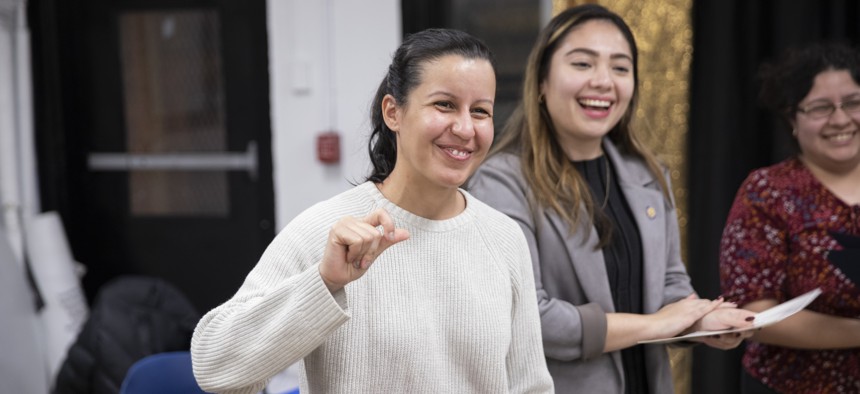New York City
Opinion: Social housing is public safety
The “Homes Now, Homes for Generations” campaign will help build healthy communities where neighbors have strong ties to one another, which will reduce violence and harm.

New York City Council Member Tiffany Cabán writes in favor of social housing. John McCarten/NYC Council Media Unit
To achieve the public safety outcomes everyday New Yorkers need and deserve, the time is now to invest in what policy nerds like me call “social housing” – permanently affordable homes, democratically owned and controlled by the people who live there, in conjunction with the public.
Social housing comes in various forms, from limited equity cooperatives to community land trusts to even public housing, but what it boils down to is simple: safety from displacement. Social housing residents are protected from cost-of-living hikes driven by the kind of rampant speculation that plagues the for-profit housing market and dislocates entire long-standing communities in a matter of years.
Alongside New York City Comptroller Brad Lander, Public Advocate Jumaane Williams and my colleagues in the Progressive Caucus, I’m fighting for investment into social housing in this year’s capital budget negotiations, as part of the “Homes Now, Homes for Generations” campaign, which launched this week.
To Mayor Eric Adams, investing in social housing may not sound like a way to improve public safety. According to him, the only city agencies that contribute to the safety of the public are the ones responsible for policing and incarceration. At least, those are the only agencies he exempts from otherwise across-the-board budget cuts on the grounds that he refuses to “compromise on public safety.”
This faulty framework is how we end up with obscene misallocation of public resources like last year’s increase in overtime for subway policing from $4 million to $155 million. What sort of results did that expenditure get us? A slight decrease in theft and a slight increase in assaults. At best, it was futile. At worst, it was harmful: Though no one was much safer, the NYPD did issue plenty of fare-beating fines to disproportionately working-class Black and brown New Yorkers, for whom the relentlessly hiked fare is increasingly unaffordable.
The essence of public safety isn’t obedience extracted under the threat of violence, but healthy communities, with the local resources, public goods and economic security necessary for residents to form rich social bonds with those around them. In a healthy community, neighbors know their neighbors. They recognize them from the dog run or the corner store. They learn one another’s name and story at the bus shelter or school pickup. They belong to common rec leagues and community choirs. They share wellness centers and houses of worship.
While policing and incarceration can punish people for their harms, a healthy community has ways of preventing harms before they occur. In healthy communities, neighbors look out for one another and one another’s kids. They lend one another necessities in times of need. They know how to get in touch with each other and with mutually trusted elders who can intervene early in conflicts, deescalate tensions, and broker resolutions. They avert violence by directly relating to each other.
Social housing makes communities healthier. It builds up the means of thriving neighbor-to-neighbor relationships:
- Social housing residents are insulated from socially catastrophic mass displacement, allowing communities to develop and maintain long-standing relationships.
- Not-for-profit and public entities can develop real estate on the basis of community need, sustainability and other socially desirable outcomes, not just how much rent some landlord can extract.
- Community ownership builds stores of wealth for working-class New Yorkers, relieving the sort of desperation, distress and despair that inevitably generates violence and theft.
Public safety doesn’t come from weapons and cages; it comes from healthy communities. Let’s invest in social housing today, to make our communities healthier now and in the future, and guarantee New Yorkers the peace of mind that comes from true public safety.
Tiffany Cabán is a member of the City Council representing Astoria, East Elmhurst and Woodside.

NEXT STORY: Editor’s Note: Happy dogs offer an alternative to troops in the subways

